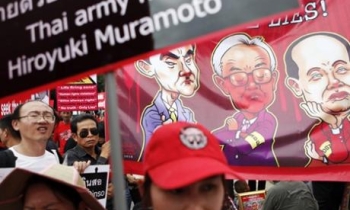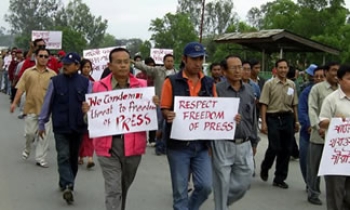The US government released less information under the Freedom of Information Act in 2004 than in 2000, according to a newly released study by the Coalition of Journalists in Open Government (CJOG). Even though FOIA requests to federal agencies dropped by 13 per cent, their overall use of exemptions to screen information rose by 22 per cent, the report said. In refusing to release information far more often, agencies relied on three exemptions pushed by the Bush administration.
The report was prepared by Coalition of Journalists for Open Government researcher Lacey Phillabaum. The Coalition of Journalists for Open Government is an alliance of more than 30 journalism-related organisations concerned about secrecy in government and the increasing closure of public records and meetings at all levels of government. The coalition has released two other FOIA reports that are available on its website cjog.net.
The study of FOIA requests and denials in 2000 and 2004 by the Coalition of Journalists for Open Government showed how departments and agencies responded to Bush administration guidelines on withholding records issued in 2001 and 2002. It reveals agencies making far greater use of several FOIA exemptions that many open government advocates believe are widely abused.
The exemptions allow withholding of information regarding intra- and interagency memos, internal personnel rules and practices, and proprietary information or trade secrets. The analysis also found a marked decline in the use of the exemption for information classified in the interest of national security, even though national security has been regularly cited since September 11, 2001 as justification for the increased safeguarding of records.
The report said that the findings made it clear that the controversial 2001 memorandum from then-Attorney General John Ashcroft did in fact alter agency response to requests for public records. Ashcroft’s memo reshaped the guidelines agencies use when considering FOIA requests. His predecessor, Janet Reno, had advised federal departments that unclassified government information should be presumed public and released if disclosure of the information did "no foreseeable harm," even though the data might fall within one of the FOIA exemptions.
In assessing how agencies use exemptions to withhold information, the study excluded the Department of Veterans Affairs, the Social Security Administration and the Department Health and Human Services. The three receive the greatest number of FOIA requests, and they also grant almost all of those requests. VA and SSA granted 99 percent of the requests in 2004, HHS 92 percent. In 2004, nearly 3.5 million requests were processed by those three agencies, compared to 522,000 by the 22 examined in detail in this report.
Among other things, the study found that the agencies responded with a flat "no" less frequently – on 3.4 per cent of requests in 2000 but only 2.7 per cent in 2004. However, requesters still wound up with significantly less information. That was because full grants, where the requester gets all information sought, fell dramatically, from 55 per cent of requests in 2000 to 45 per cent in 2004. In real numbers, that was 6,439 fewer denials and 96,021 fewer full grants.
There was also an increase in what the government calls partial grants, in which the requester gets some but not all of the information sought. There were 44,464 more partial grants in 2004 than four years earlier. Or looked at another way, the government made partial grants in 12 per cent of the cases in 2000 and in 22 per cent of the 2004 cases. The government does not report the completeness of the partial grant by indicating what portion of the information sought was released and how much was withheld. But it is possible to make a qualitative inference from the agencies' use of exemptions, the report said.









